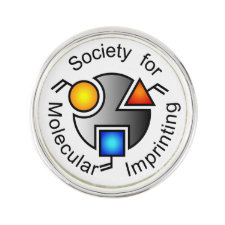
Authors: Nawaz T, Ahmad M, Yu JY, Wang SQ, Wei TX
Article Title: A recyclable tetracycline imprinted polymeric SPR sensor: in synergy with itaconic acid and methacrylic acid.
Publication date: 2021
Journal: New Journal of Chemistry
Volume: 45
Issue: (6)
Page numbers: 3102-3111.
DOI: 10.1039/D0NJ05364C
Abstract: A novel tetracycline (TC) imprinted polymer was prepared in visible light via synergy of dual functional group monomers methacrylic acid (MAA) and itaconic acid (IA) for the selective detection of TC in urine and milk samples. Surface plasmon resonance (SPR) and the reversible addition fragmentation chain transfer (RAFT) mechanism were employed in combination with 4-cyano-4-[(dodecylsulfanylthiocarbonyl)sulfanyl]pentanoic acid (CDTPA) in the presence of ethylene glycol dimethacrylate (EGDMA) as the cross-linker. In addition, the ratio of template, IA, MAA and EGDMA was optimized (0.8 : 0.3 : 5 : 9) by real time monitoring via SPR. The surface of the TC imprinted sensor chip was characterized by contact angle measurements, Fourier Transform Infrared Spectroscopy (FTIR) and Scanning Electron Microscopy (SEM). The (IA-MAA@SPR)MIP sensor chip displayed a high adsorption capacity and selectivity in comparison to other analogues and non-imprinted polymer (NIP) based sensor chips. Through 7 adsorption-desorption cycles, the (IA-MAA@SPR)MIP sensor chip exhibited a good recoverability. These features suggested that the IA-MAA based sensor chip was an ideal candidate for the detection of TC. Consequently, within the concentration range of 1 × 10-13-1 × 10-7 mol L-1, the reflectivity changes versus the negative logarithm of concentrations presented excellent linearity; R2 = 0.99. Based on a linear equation, the IA-MAA@SPR MIP sensor chip showed lower values for the limit of detection (LOD) and limit of quantification (LOQ) i.e. 1.38 × 10-14 mol L-1 and 4.5 × 10-14 mol L-1, respectively. Furthermore, the influence of the matrix on the sensor chip was successfully analyzed in real samples with satisfactory outcomes. Hence, IA-MAA based MIPs in combination with the SPR sensor chip demonstrated potential application prospects for rapid and effective sensing even in the complicated matrices
Template and target information: tetracycline, TC



Join the Society for Molecular Imprinting

New items RSS feed
Sign-up for e-mail updates:
Choose between receiving an occasional newsletter or more frequent e-mail alerts.
Click here to go to the sign-up page.
Is your name elemental or peptidic? Enter your name and find out by clicking either of the buttons below!
Other products you may like:
 MIPdatabase
MIPdatabase









